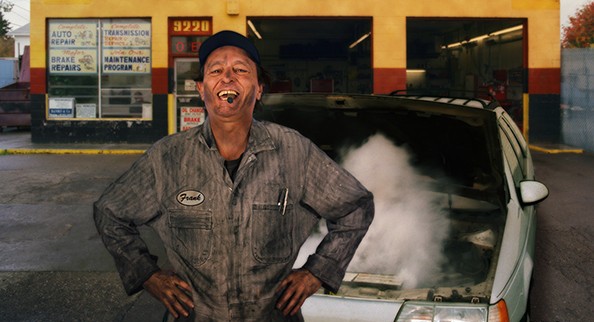
If your injury rehab isn’t working I’d like you to think about the following scenarios for a minute.
Imagine taking your car in for a service and you see your mechanic pull up in the most uncared for pile of junk you’ve ever seen. Would that put you off using his services?
How about turning up to the office of your new financial advisor only to hear her in an intense discussion with the authorities regarding non payment of tax. Would that have you thinking twice about entrusting her with your family’s finances?
What about using a dentist with bad teeth? Or a hair stylist with a Trump quiff?
Would you then think twice about taking advice from a rehab professional who had undergone two knee and one hip replacement?
Apart from their advice on managing the operation itself, surely this individual is a shining example of what not to do in terms of managing the health of your joints?
Not so in the world of orthopaedic medicine unfortunately.
I recently read an interview with an acknowledged rehab expert who had what he described as ‘intermittent popping and pain’ in his hip for over 25 years. He managed this with the tools and knowledge at his disposal (mostly stretching and joint manipulation) only to find he recently required a total hip replacement.
What does that tell you about the effectiveness of those methods?
This illustrates the current level of understanding in conventional rehabilitation.
When people get to the stage of requiring joint replacements, the cause is usually cited as either wear and tear or some disease process, most commonly arthritis. Rarely are the underlying mechanics of the individual examined.
It’s how people move however that affects how their joints wear. Even more so if there’s a disease process underway.
To use a car analogy; you can have a great car with the best set of tyres available but if the wheel tracking is off you’ll get uneven wear on the tyres. This will seriously limit their life span. Your joints are no different.
By the time a joint replacement is being considered, nobody is looking at these details unfortunately.
It’s these details however that provide the reasons why an individual may need a joint replacement in the first place and it’s understanding how to effectively influence these details that can prevent these surgeries.
Checking and maintaining the ability of your muscular system to control the forces that are placed on your joints is the key to their long term health and integrity.
Muscle Activation Techniques (MAT) and regular resistance training is the most effective way to do this.
We use MAT to ensure that your muscular system is as balanced as possible and the wear and tear on your joints is therefore kept to a minimum. Progressive resistance training then enables your muscles to better tolerate the activities that you enjoy, reducing the impact these may have on your joints.
It has been claimed that the upsurge in aerobic exercise over the last 30 years has merely transferred the burden of treatment from cardiac surgeons to orthopaedic surgeons. This doesn’t have to be the case.
Get yourself checked out to see exactly where your muscular system is at and start making the changes necessary to help you avoid these surgeries.